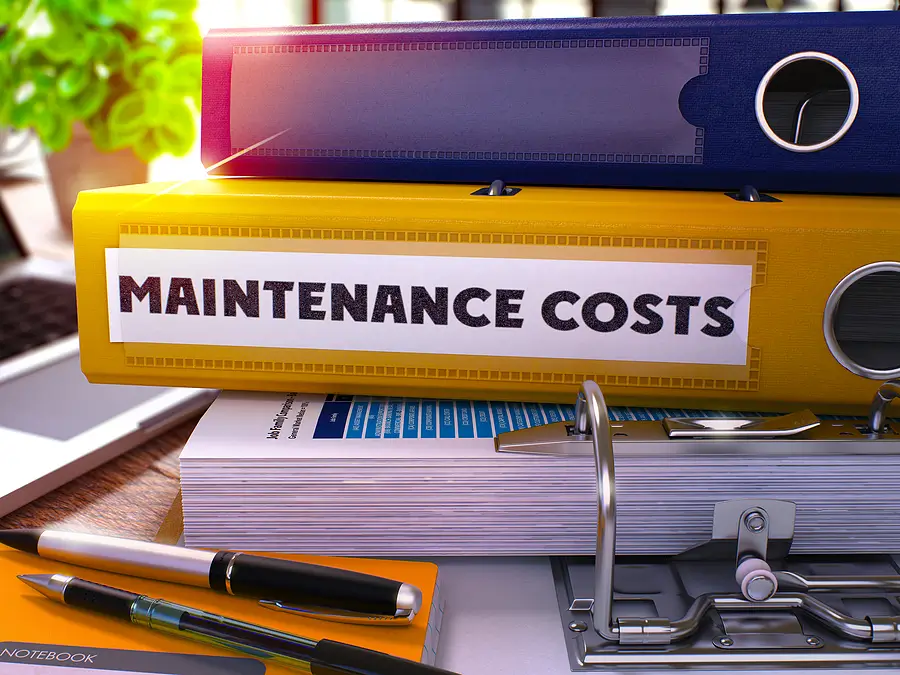Managing a property is no small task, and keeping maintenance costs under control is one of the biggest challenges landlords and real estate investors face. Cutting corners on upkeep can lead to costly repairs, unplanned downtime, and unhappy tenants. However, by implementing the right maintenance strategy, you can reduce maintenance costs while maintaining property value and tenant satisfaction.
Here are some top strategies to reduce maintenance costs without compromising quality.
1. Prioritize Preventive Maintenance Over Reactive Repairs
One of the most effective maintenance cost management strategies is shifting from reactive maintenance (fixing things only when they break) to a preventive maintenance program. Regular inspections and maintenance help identify minor issues before they become costly repairs. This not only extends the lifespan of your equipment but also reduces emergency repairs, which are typically more expensive and disruptive.
For example, scheduling HVAC system tune-ups can prevent breakdowns during peak seasons, ensuring equipment reliability and tenant comfort. A well-structured maintenance schedule helps minimize downtime, prevent equipment failure, and reduce equipment maintenance costs in the long run.
2. Implement a Computerized Maintenance Management System (CMMS)
A maintenance management system (CMMS) is a powerful tool for tracking maintenance operations, scheduling repairs, and managing work orders efficiently. It provides maintenance professionals with valuable insights through data collection, helping identify patterns and optimize maintenance processes.
By using CMMS software, landlords and maintenance managers can track equipment maintenance costs, monitor spare parts inventory, and receive alerts for upcoming maintenance tasks. This systematic approach significantly improves efficiency, ensuring fewer breakdowns and lower maintenance costs.
3. Invest in Predictive Maintenance Technology
While preventive maintenance is a proactive approach, predictive maintenance takes things a step further. By leveraging technology like vibration analysis and IoT sensors, you can monitor equipment effectiveness and detect potential failures before they occur.
For instance, sensors on a property’s water heater can alert the maintenance team to unusual activity, preventing leaks and reducing maintenance expenses. These data-driven insights help maintenance technicians make informed decisions, improving overall equipment maintenance and reducing unnecessary maintenance spending.
4. Train Your Maintenance Staff and Contractors
A well-trained team is essential to effective maintenance management. Investing in employee training ensures that your maintenance staff follows best-use practices, reducing human error and maintenance time. Properly trained personnel can identify opportunities to cut maintenance costs by using correct procedures and avoiding unnecessary equipment repairs.
Additionally, partnering with reliable contractors and vendors can help control labor costs while ensuring high-quality service. Negotiating bulk service contracts for plumbing, HVAC, and electrical work can lead to significant cost savings over time.
5. Optimize Spare Parts Inventory and Procurement
A common mistake in maintenance management is either overstocking or understocking spare parts. Excess inventory ties up capital, while insufficient stock leads to delays in equipment repairs. Implementing a spare part inventory system ensures that you have the necessary parts available without wasting resources.
Using CMMS software allows you to track parts usage and identify trends, making it easier to plan purchases efficiently. This reduces wait times, improves response speed for repairs, and ultimately lowers costs.
6. Conduct Regular Property Inspections and Audits
Regular property inspections help identify issues early, allowing you to make minor repairs before they escalate into costly repairs. Maintenance checklists should be used to ensure all critical systems—such as plumbing, roofing, and electrical—are inspected consistently.
Additionally, periodic audits of your maintenance budget and maintenance expenses can help identify cost-saving opportunities. Reviewing historical data on past repairs provides insights into where money is spent most and helps in cost management strategies to eliminate waste.
7. Use Energy-Efficient and Durable Materials
Investing in high-quality, durable materials may have a higher upfront cost but results in significant cost savings over time. For example, energy-efficient LED lighting reduces electricity bills and requires less maintenance compared to traditional bulbs. Similarly, choosing high-quality roofing materials can extend the lifespan of your property, reducing the need for frequent repairs.
Smart Maintenance Strategies Save Money and Preserve Property Value
Effective maintenance management is about being proactive rather than reactive. By implementing a preventive maintenance program, utilizing CMMS software, and investing in predictive maintenance, you can reduce maintenance costs without sacrificing quality. A well-trained maintenance team, optimized maintenance schedule, and strategic use of technology can lead to significant cost savings, improved equipment reliability, and fewer disruptions.
At Investment Safe Property Management, we specialize in optimizing maintenance operations for real estate investors and landlords, ensuring properties remain in top condition while keeping costs under control. If you’re looking for expert maintenance management services that deliver cost-effective solutions, contact us today to learn more!


